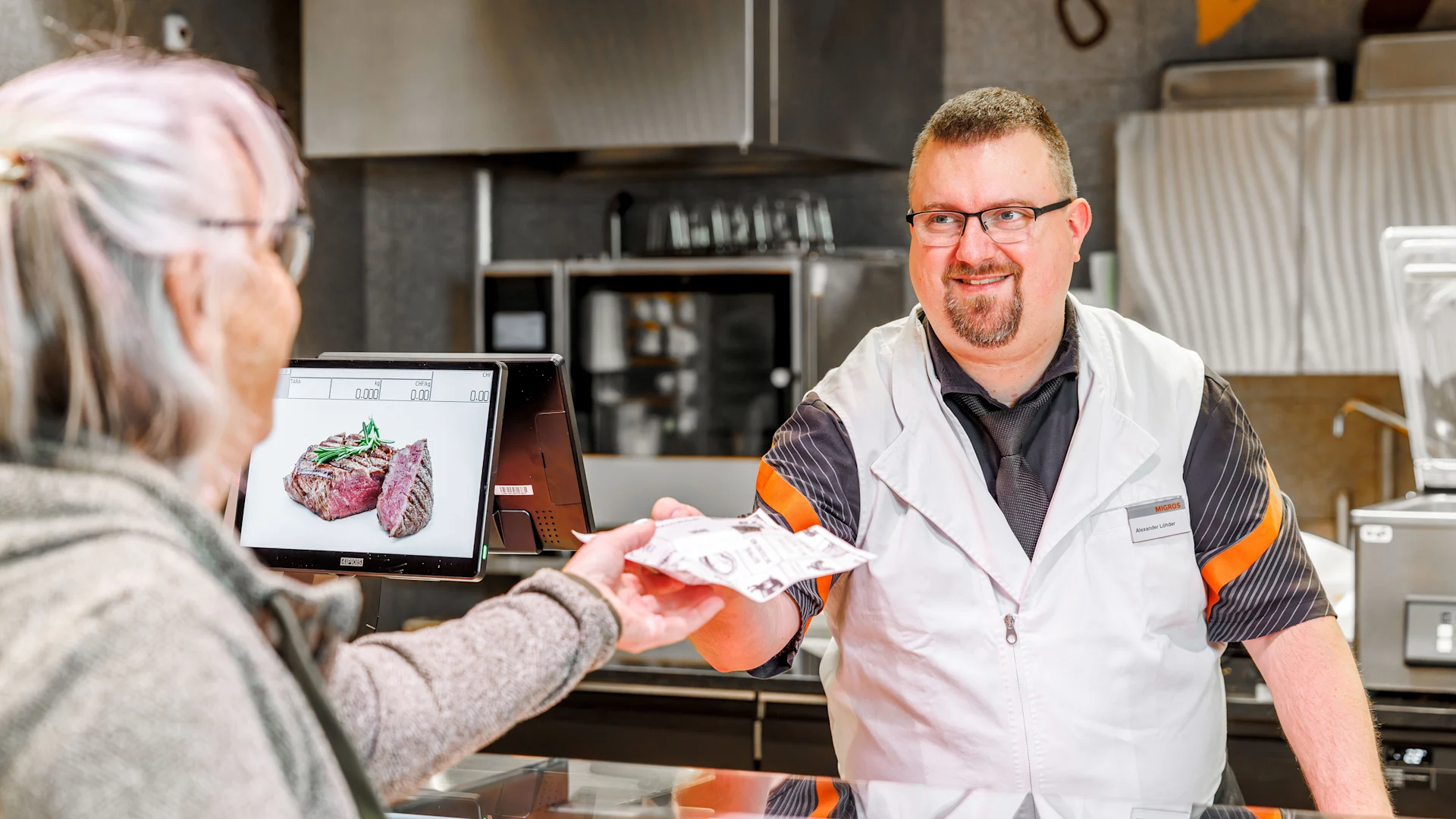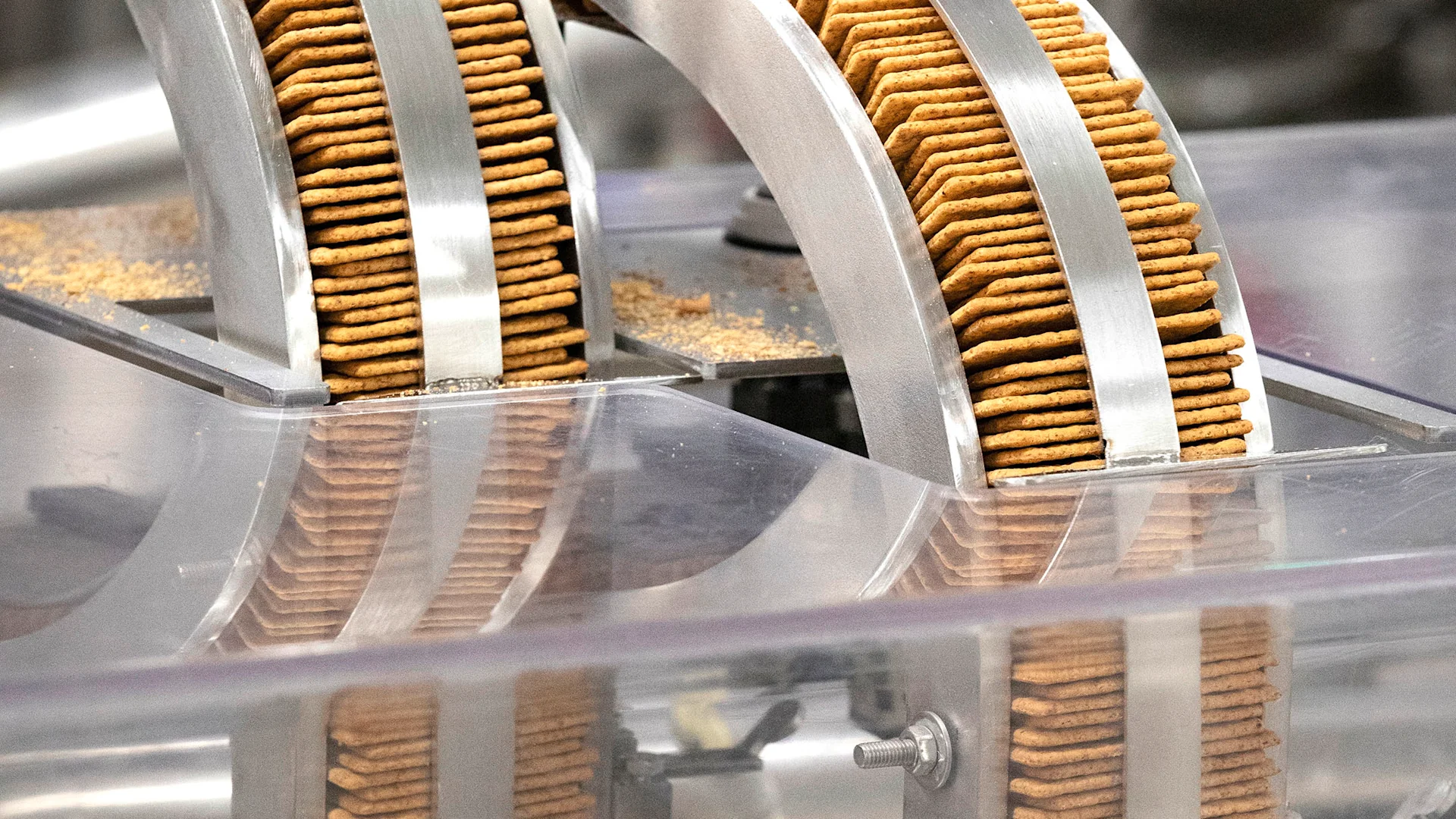
Supermarket
A look behind the meat counter
What customers want in the run-up to the festive season and the mistakes many people make when preparing meat.
navigation

Sandra Weiss, engineer
Sandra Weiss is an engineer and a brilliant mechanical engineer. At the Migros company Midor, she scales down complicated production facilities.
The 34-year-old specialist not only knows a lot about factories, she also finds them beautiful. “I love conveyor belts, huge silos and clean weld seams,” says Sandra Weiss. Standing in a production facility of her employer, the Migros subsidiary Midor, she is looking at a piece of equipment that she particularly likes: made of chromed steel and Plexiglas, the machine produces Blévita sandwiches – double-layered biscuits or crackers that contain a sweet or seasoned cream filling.
In the past, this production line had an impressive length of around 50 metres. At the end of last year, the complex machinery was not only moved to another part of the factory, but also shortened to 25 metres. This had to be done because the traditional company Midor in Meilen ZH is expanding its machinery, but wants to do this in the existing buildings.
Weiss, the engineer, undertook the tricky job of shrinking the plant. At first, this seemed almost impossible. After all, it is a perfectly rehearsed orchestra made up of many instruments. A giant mixer blends the ingredients for the cream filling; another machine spreads the filling on a sponge cake or cracker with a precisely measured portion of the mixture; then the lid lands on top with pinpoint accuracy. The double-decker Blévita crackers are briefly chilled to harden the filling and finally, packaged, ready for sale.

Sandra Weiss solved the problem by virtually folding up the entire plant. What used to be a perfectly straight production line now consists of individual sections arranged in parallel and connected to each other by conveyor belt loops. But there was still one problem: at the new location, the machinery blocked a lane used by small electric vehicles. Weiss came up with an original solution: one section of the system is on rollers and can be uncoupled. It is easy to push it out of the way to clear the lane.
How does this specialist come up with such clever ideas? “It helped me to have conversations with a wide variety of professionals,” she explains. “I exchanged ideas not only with other engineers, but also with electricians, logisticians and, above all, with the people who regularly operate the plant and therefore know it inside out.” Sport also helps her with solving technical problems. She does yoga as well as karate and goes hiking in the Glarus Alps. “I find that when I’m physically exerting myself, my thoughts often get moving as well.”
“There was no gender gap in my studies.”
When she was growing up in the German state of North Rhine-Westphalia, it became clear that Sandra Weiss had a special talent. Whatever she did, whether it was playing with cuddly toys and Barbie dolls or constructing something out of Legos, the games were always not only imaginative but also carefully organised. She would often enlist her younger sister as a helper.
Later, in upper secondary school, Sandra excelled in mathematics and physics. Still, her mother had reservations when her daughter wanted to study mechanical engineering. That was a male domain, she said, and she would have difficulties in this profession as a young woman. But her daughter refused to be dissuaded and went through with her dream course of study at the Baden-Württemberg Cooperative State University. There were over a hundred men in her class and only fifteen women. But she never had to put up with stupid comments. “There was no gender gap in my studies, male and female students were equally enthusiastic about technology,” she says. They shared a passion that drives Sandra Weiss to this day. That is why she enjoys tackling tasks that are seemingly impossible.
The Swiss economy urgently needs more female skilled workers in professions related to mathematics, information technology, natural sciences and technology (STEM). In Switzerland, women account for just 20 per cent of all educational qualifications in this field.
Looking for a job? You can apply here.
Whether at a desk, in a store or in a laboratory – our work environment is diverse, just like the people behind it. Discover their stories.